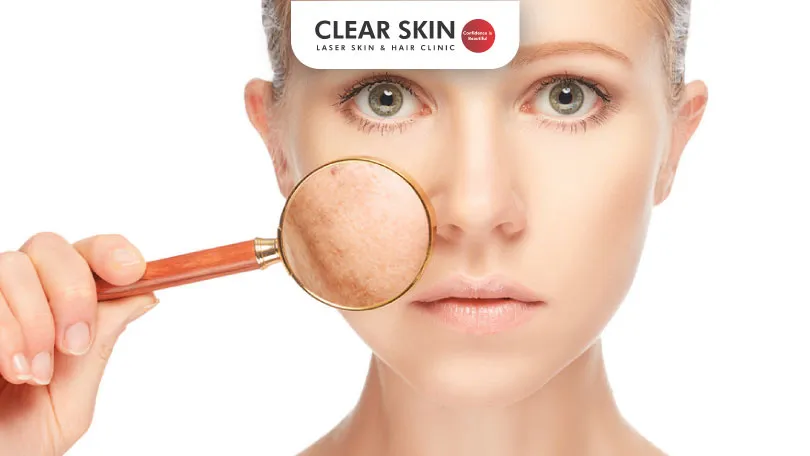How to Fade Pigmentation from Face: Effective Tips & Treatments
Reviewed By: Dr. Manali Shah
Updated on: 19th September, 2022

“Tired of stubborn facial pigmentation? Discover effective tips and treatments to achieve a clearer, more even complexion.”
Dealing with pigmentation on your face can be a frustrating experience, but fear not – there are effective ways to address this issue. In this comprehensive guide, we will explore the causes of pigmentation on the face and provide you with actionable steps on how to fade pigmentation and regain your clear, radiant complexion.
Table Of Content
-
What Is Pigmentation?
- Types of Facial Pigmentation
- Causes of Hyperpigmentation
- How to Fade Pigmentation from Face?
- Conclusion
What Is Pigmentation?
Pigmentation refers to the colouring of your skin, primarily determined by a pigment called melanin, produced by melanocytes in the skin. While melanin plays a crucial role in protecting your skin from harmful UV rays, an overproduction or uneven distribution of melanin can lead to pigmentation problems.
Types of Facial Pigmentation
Facial pigmentation can manifest in various forms, including:
Hyperpigmentation
Hyperpigmentation occurs when certain areas of your skin become darker than the surrounding skin due to an excess of melanin production. Common forms of hyperpigmentation include melasma, sunspots, and post-inflammatory hyperpigmentation (PIH).
Hypopigmentation
Hypopigmentation, conversely, results in lighter patches of skin due to a lack of melanin production. Conditions like vitiligo are examples of hypopigmentation.
About Fading Pigmentation
Fading pigmentation is a gradual process that involves reducing the appearance of dark spots or discoloration on the skin. With consistent skincare and targeted treatments, one can achieve a more even and radiant complexion. It’s about embracing a journey towards healthier, glowing skin.
Causes of Hyperpigmentation
Understanding the causes of hyperpigmentation is crucial in addressing the issue effectively. Some common causes include:
Sun Exposure
Excessive sun exposure can stimulate melanin production, leading to sunspots and other forms of hyperpigmentation on the face.
Hormonal Changes
Pigmentation issues, such as melasma, can be triggered by hormonal fluctuations, often occurring during pregnancy or while taking birth control pills.
Post-Inflammatory Hyperpigmentation (PIH)
PIH can develop after skin injuries or inflammation, such as acne breakouts or insect bites.
Genetics
Your genetic makeup can influence your susceptibility to pigmentation problems.
How to Fade Pigmentation from Face?
Now that we’ve explored the fundamentals, let’s delve into effective strategies for fading hyperpigmentation from your face.
Sun Protection
Topical Treatments
There are multiple active ingredients which can help in lightening or clearing the pigmentation, some help in stopping new pigment production. The choice of product depends on the cause of pigmentation. we Wecommend you to visit your dermatologist and get the best possible treatment to treat your hyperpigmentation.
Chemical Peels
Consult a dermatologist for chemical peel treatments that can exfoliate the top layers of your skin, reducing pigmentation.
Microdermabrasion
This non-invasive procedure can improve skin texture and fade pigmentation by removing the outermost layer of skin.
Laser Therapy
Do You Know?
Roughly 250 Patients Are Treated
Everyday By These Dermatologists
(You are one click away from flawless skin)
Meet Our Dermatologist!
Conclusion
Fading facial pigmentation requires a combination of proper skincare, natural remedies, and advanced treatments. Consistent use of sunscreen, regular exfoliation, and incorporating ingredients like vitamin C and niacinamide can make a significant difference. For persistent pigmentation, consult Clear Skin Clinic’s dermatologists for personalized advice and professional treatments. Achieve clearer, brighter skin with the right care and expert guidance.
Further Reading
How to Avoid Acne in Monsoons?
Avoid acne in monsoons with a gentle skincare routine, diet tips, and hydration. Get expert advice to manage breakouts and keep your skin clear and healthy.
Does Makeup Cause Acne-Prone Skin?
Worried about breakouts from using makeup? Does makeup cause acne for you? Learn the safe ways to apply makeup for acne-prone skin.
Morning Skin Care Routine for Glowing Skin
Clear Skin Clinic, led by top dermatologists, shares the ideal morning skincare routine to help you achieve a radiant complexion naturally and effectively.
Monsoon Skin Care Tips for Radiant, Healthy Skin
Clear Skin Clinic, led by top dermatologists, shares the ideal morning skincare routine to help you achieve a radiant complexion naturally and effectively.
Have thoughts? Please let us know
We are committed not only to treating you, but also educating you.





